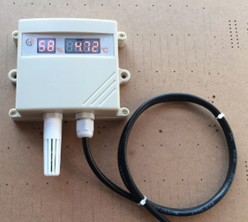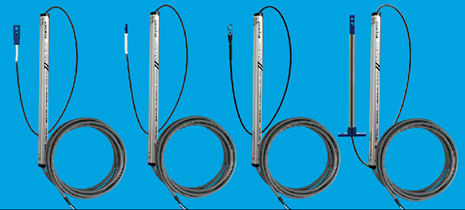Reducing your Data Center Carbon Footprint
INCREASE SUSTAINABILITY
Step 2 in your journey to improving your data centre carbon footprint is to deploy environmental sensors.
These allow you to remotely monitor the conditions in your data centre, know where the opportunities are to improve efficiency, and ensure that your efficiency initiatives are not putting your IT equipment outside of recommended ranges and increasing the risk of downtime.

Environment sensors that will help you increase efficiency include:
- Temperature. Temperature sensors placed at each rack give you data on if you are overcooling, and if so, by how much. With this data, you will know how much you can raise temperature set points by to save energy. Temperature sensors also help you ensure you don’t raise temperatures above manufacturer or ASHRAE® recommendations which can damage equipment and cause downtime. Gauging temperature control within the data center is essential to avoid equipment overheating, to regulate equipment cooling, and to measure overall efficiency. It is not enough to simply rely on the temperature conditions at room level in a data center. When a heat issue arises, the air conditioning system will attempt to remedy the issue, but this will only become apparent with the system is unable to compensate, which may be too late for the rack. Optimal environmental temperature monitoring typically includes multiple temperature sensors located on the top, middle, and bottom of racks, and at air conditioning intake and discharge vents to measure heat generation and output as well as cooling efficiency. Temperature control as an environmental monitoring device is useful in the analysis and optimization of the facility’s heating and cooling system. Temperature monitoring can help the facility save energy while making sure that sensitive IT equipment is not compromised.

- Humidity sensors placed at about every five racks will let you know if you are wasting energy by allowing your CRAC units to excessively humidify or de-humidify your environment. A data center must continuously operate at peak efficiency to maintain the business functions it supports and to decrease operational expenses. In this environment, heat has the potential to create significant downtime, and therefore must be removed from the space. In addition to heat, the control of humidity in Information Technology environments is essential to achieving high availability. Air in the IT environment must contain the proper amount of humidity to maximize the availability of computing equipment. Too much or too little humidity directly contributes to reduced productivity and equipment downtime. Humidity can affect sensitive electronic equipment in adverse ways, and therefore strict humidity controls are required.

- Airflow sensors placed at each cold air supply and hot air return allow you to ensure the cooling system is functioning properly and that airflow is at the right level so that all your equipment is receiving cooling air as efficiently as possible.

- Air pressure. If you have a hot/cold aisle containment system in place, air pressure differences between the aisles could lead to partition leaks that lead to inefficient cooling and hot spots. Air pressure sensors placed under the raised floor can provide data to CRACs, CRAHs, or the building management system to vary fan speeds to efficiently cool the data center.

Understanding differential pressure zones and airflow allows you to:
- Identify wasted or misdirected air pressurization/flow
- Make the changes to optimize flow utilization
- Focus cooling resources and airflow on areas where it is most needed
- Easily verify the effects of cooling and air handling efficiency efforts
- Be alerted to any changes that may occur in pressurization indicating potential leaks or changes in air handling performance
- Correlate air pressure/flow changes with temperature changes (using available temperature probes)
Sensors are easy to install and cost-effective and allow you to remotely monitor the conditions of your data center, know where opportunities to improve energy efficiency are, and ensure that your efficiency initiatives are not putting your equipment outside of recommended ranges and increasing the risk of downtime.
Tri-Paragon’s DCIM as a Service using Sunbird's DCIM software is one of the few solutions on the market that focuses exclusively on two of the biggest and costliest challenges data center operators face: monitoring and operations. And unlike other DCIM providers, who offer overly complex, bloated, and expensive software, Sunbird's solution is easy to use. It provides the ability to better manage assets, change, and capacity; and enables power monitoring, environmental monitoring, and energy management.
Follow our weekly blogs for additional Tips to reduce power consumption (your carbon footprint) and increase the sustainability of your data centre.
Contact Tri-Paragon Inc. for additional details. We can be reached at 416 865-3392 or by email at info@triparagon.com






